Healthcare Leaders Respond to Changing Federal Landscape
The transition to new federal leadership invariably brings transformation across industries, and healthcare is no exception. Recent executive directives from the current administration have created both immediate impacts and long-term concerns for healthcare institutions nationwide. In mid-February, a group of hospital financial executives gathered at an HFMA-sponsored roundtable to discuss the rapidly evolving policy environment and its implications for healthcare operations.
Navigating Policy Turbulence
Participants described the current climate as one of “perpetual flux,” with regulatory modifications emerging at an unprecedented pace. While legal challenges have been mounted against several directives, financial leaders acknowledge that even if some policies are overturned, others will endure. This uncertainty has compelled healthcare CFOs to develop contingency strategies for multiple scenarios—most of which project negative effects on institutional financial health.
Research Funding Restructuring Threatens Academic Centers
A particularly concerning development for teaching hospitals and research institutions involves significant alterations to federal research grant structures. Specifically, modifications to indirect cost recovery rates on certain National Institutes of Health grants have seen dramatic reductions—from approximately 50% to just 15%. This represents a substantial financial blow to academic medical centers, which often serve as cornerstone employers in their communities. Any resulting workforce reductions could potentially ripple throughout regional economies.
Supply Chain and Infrastructure Challenges
Trade policy adjustments have emerged as another critical concern. Financial executives highlighted how increased tariffs on materials like steel and aluminum will substantially inflate construction and renovation expenses. Many institutions may be forced to postpone facility modernization projects—a troubling prospect considering the aging infrastructure of numerous American hospitals.
Additionally, imported medical supplies such as personal protective equipment are expected to see price increases, with tariff impacts cascading throughout the supply chain as vendors pass along heightened costs to healthcare providers.

Anticipated Funding Reductions
Healthcare executives anticipate potential cutbacks in government healthcare funding mechanisms. The 41 states that implemented Medicaid expansion currently receive 90% federal coverage for newly eligible enrollees, but this funding structure appears vulnerable. Despite assurances that Medicare reductions are “not under consideration,” financial leaders believe both programs may ultimately face cutbacks to meet broader budgetary objectives.
Comparing Current Challenges to the Pandemic
One executive drew parallels between today’s environment and the COVID-19 crisis, though with a crucial distinction: during the pandemic, the healthcare sector operated with a unified purpose and perceived governmental support. The current climate was characterized as “the wild west…it’s a rapidly changing environment, and we don’t know what the results are going to be.” Unlike during the health emergency, many institutions now perceive governmental actions as oppositional rather than supportive.
“the wild west…it’s a rapidly changing environment, and we don’t know what the results are going to be.”
Strategic Responses from Healthcare Systems

Rethinking Capital Investments
Healthcare organizations are reassessing construction initiatives and capital expenditures. Some are pursuing creative alternatives, such as reducing the scope of planned facilities or implementing phased approaches to development.

Cost Optimization Efforts
Supply chain represents a significant opportunity for expense reduction. As the second-largest budget category after personnel, supplies constitute a substantial financial commitment—with one participant noting annual expenditures of one billion dollars in this area. Even modest percentage improvements can yield meaningful financial benefits, though they often require close collaboration with clinical teams.

Measured Workforce Approaches
Despite financial pressures, institutions are avoiding reactive measures like hiring freezes or staff reductions. After years of intensive recruitment efforts for nursing and technology personnel, organizations recognize the importance of maintaining staffing momentum despite current challenges.
Implications for Healthcare Vendors and Partners
The evolving landscape creates both challenges and opportunities for organizations serving the healthcare sector:

Return on Investment Imperatives
Solutions that deliver demonstrable, near-term financial returns have become increasingly attractive. Artificial intelligence, automation, and optimized service arrangements that produce measurable benefits within three to five years (or sooner) will receive priority consideration.

Security Considerations
Cybersecurity has emerged as a critical concern for financial decision-makers. Multiple vendor relationships increase both security vulnerabilities and insurance expenses, making comprehensive solutions from fewer, security-focused partners increasingly desirable.
Guidance for Healthcare Solution Providers
Hospital financial leaders offered several recommendations for current and prospective partners:
- Maintain realistic promises regarding implementation timelines and capabilities
- Demonstrate accountability by fulfilling commitments and addressing issues transparently
- Build relationships based on reliability and consistent performance
As one CFO put it,
“Do what you said you were going to do…at the price you said… and if you fall, tell me how you’ll fix it and how it won’t happen again.”
Looking Forward
While leadership transitions always introduce change, the current administration has brought unprecedented uncertainty to healthcare financial planning. As policy directives continue to evolve through legislative and judicial processes, healthcare organizations must prepare for potential funding reductions that could further compress already narrow margins. Success will require innovative approaches to cost management and capital planning, while vendors offering compelling near-term value propositions and robust security credentials will find receptive audiences among healthcare leaders navigating these uncharted waters.





